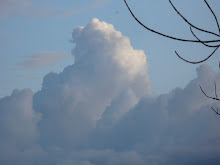Money is important in Jane Austen's world, but usually the general is more important than specific. Mr. Bingley of Pride and Prejudice is considered a very good catch with an income of £4,000 or £5,000 a year. But when people learn his friend Mr. Darcy has an income of £10,000 a year, they are speechless, agog, seriously impressed. Thus by the context of people's reactions, we know the difference between the two incomes, without really knowing (or needing to know) what £10,000 or £5,000 would mean in today's money. Also notice that Darcy and Bingley are friends, occupying the same general social position, doing the same sort of things. This would not necessarily be true in our world, if one friend, say, made $30,000 and the other $60,000.
Likewise, Emma Woodhouse, with a fortune of £30,000 (notice how the woman's wealth is expressed in a lump sum, while men's wealth is expressed as annual income, as was the convention of the time) is the wealthiest of Jane Austen's heroines. (While Jane Austen's actual circumstances, as the unmarried daughter of clergyman living with her widowed mother, were closer to the unfortunate Miss Bates.) But what does Emma's £30,000 mean, really? It makes Mr. Elton want to marry her, but as she herself reflects, failing to win Miss Woodhouse with £30,000, he would be just as happy to marry Miss Someone Else with £20,000 or £10,000. A fortune of £10,000, as I recall, is what sparks Mr. Wickham's sudden interest in Mary King ("that nasty little freckled thing," as Lydia calls her).
Small amounts of money are not as important in Jane Austen, but I am sure I am not the only American reader to be baffled by English money. What, exactly, is a quid? A bob? How many shillings in a pound? Where do guineas fit in? This I have finally gotten around to figuring out, with the help of "All Things Austen," an amazing two-volume guide I recommend to everyone with an extra $157.95 they are unsure of how to wisely spend.
Old-style English money consisted of pounds, shillings and pennies (pence). Twelve pence in a shilling, 20 shillings to a pound, thus 120 pence in a pound. They were abbreviated as £, s and d, of which only the £ makes any sense to me. A guinea, which seems a most unnecessary unit of money, was 21 shillings. Confusing the issue were coins like the crown (five shillings) and the half-crown (2s, 5d), the half guinea (10s, 6d), the third guinea (7s) and the half pound. As well as the sixpence, immortalized in the nursery rhyme.
But I think the shilling level is what makes it most confusing for modern readers conditioned to think in the decimal world of dollars and cents. Those stockings Jane mentions in a letter that cost 4s 3d a pair. (4 x12 + 3): Why not just say they cost 51 pence? Who knows, but people did not, as the literature makes clear.
Your Sunday Austen Meditation
3 years ago


3 comments:
The cost of luxury goods was usually expressed in guineas rather than pounds. Thus John Thorpe actually paid *counts on fingers* 52.5 pounds for his gig.
Yes, an excellent point, Austenblog -- the guinea was somehow a more elegant unit of exchange. I am trying to think of an equivalent to that in today's world. I guess slipping a crisp Benjamin to a maitre d'at a fine restaurant vs. giving him the same amount of money in grubby ones and fives?
Post a Comment